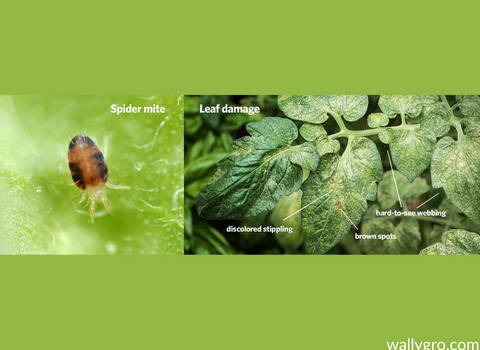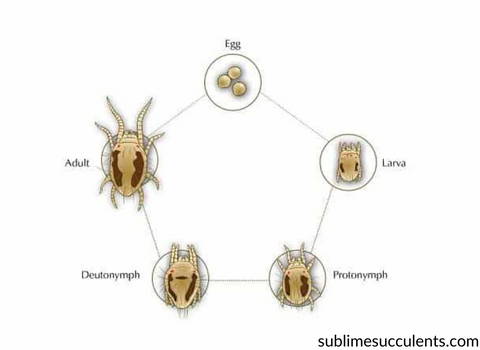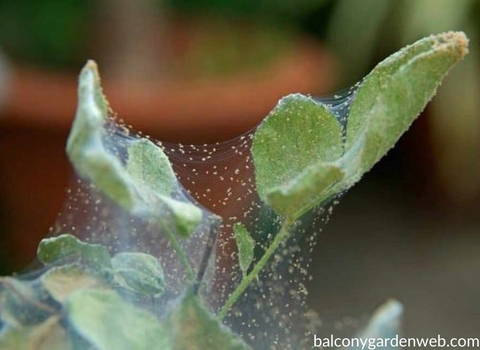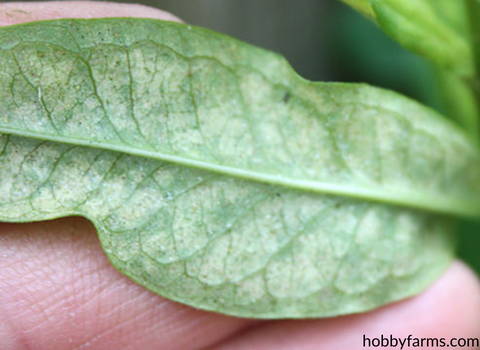How to Know You Have Spider Mites and What to Do About It
Spider mites are tiny, eight-legged pests that feed on plants. A spider mites’ body is flat with eight legs, two antennae, and no eyes or mouthparts visible externally. The size of these houseplant pests ranges from 0.02-0.04 inches. Females have a pair of abdominal brushes at their rear end that they use to lay eggs while males do not possess this trait.
They can be found feeding on the underside of leaves and will cause damage by sucking plant juices. This damages plant tissue, which leads to a reduction in photosynthesis rate as well as reduced growth rates for all parts of the plant. Spider mite infestations can also lead to increased susceptibility to diseases since they steal vital fluids from plants.
Homeowners must know how spider mites look like so they can identify them and get rid of them before it causes major problems with their home garden or business.
Spider Mite Life Cycle
Spider mites are small arachnids that can infest homes and gardens, sucking the vital juices from plants. They also feed on insects like caterpillars and grasshoppers.
The life cycle of a spider mite begins with an egg hatching into an immature or larval stage called a protonymphal instar which then moults into an adult-like second instar in just two days.
Spider mites have six stages before adulthood:
The first is the egg hatched by laying female adults onto leaves where they will hatch after four to ten days depending on temperature ranges outside its egg sac (the sac where it was laid). It looks like one white dot at first but soon develops legs as well as other features.
The second is its larval stage, where it will grow and eventually shed its exoskeleton or skin to become a nymphal instar. It looks like a small white spider with eight legs at this point but soon develops two more pairs of legs as well as other features such as eyes and mouthparts before it becomes an adult (third instar).
The fourth through sixth stages are the phases of adulthood:
Protonymphs, deutonymphs, tritonymphs, tetronyphans. These six adults feed on leaves and stem while laying eggs within their life cycle's egg sac for another generation of mites that hatch from four to ten days later depending on temperature ranges outside the egg sac - temperature ranges for the eggs to hatch are between 25 and 30 degrees Celsius.
Habitat of Spider Mites
Spider mites love to live in hot, dry environments. They can be found in the soil and surface of plants as well as on dead wood. Spider mite infestations typically start when eggs are laid near a plant’s trunk or stem which then hatch into tiny spiderlings that climb up and spread throughout leaves (usually leaving the bottom of the leaf untouched).
Signs spider mites are already in your garden include:
Webbing, especially near the ground or along stems of plants.
Yellowing leaves and shoots (leaf curl) on broadleaf plants such as tomato, pepper, turfgrass and landscape trees. This leaf curling is a result of spider mites feeding on within their veins which can lead to plant death if left untreated.
Stippled foliage is caused by spider mites biting into tiny cell tissues where they feed through suction pressure to extract fluids from plants including tomatoes peppers fruit trees etc. The white mineral deposits around each bite mark indicate the spider mite be there for a while - usually at least one month. If you see this type of stippling on your plant's spider mites is probably already present.
Spider mites may be seen with the naked eye, crawling, or running over surfaces in protected areas such as under leaves and around flowers.
Yellowing foliage may also indicate spider mite feeding if other signs of spider activity are not found.
Where Do Spider Mites Get Their Food?
Spider mites feed by puncturing the plant’s surface with their mouthparts and sucking up its sap. From that point on, spider mites excrete a waste product called honeydew which is secreted from their anus and becomes food for other insects like ants or aphids.
Plants don't typically show any signs of damage until it's too late. Other symptoms on plants include yellowing leaves, distorted growth, stunted plants (due to loss of chlorophyll), webbing between branches and foliage where spider mite populations are protected in this way against predators such as ladybugs and parasitic wasps.
What Do You Need to Know About Spider Mites and Your Garden?
The best way to get rid of spider mites in your garden plants is by physically removing them from the plants. Keep an eye out for webs between branches and leaves as those are most likely infested with a population of spider mites.
It's important not to use pesticides, especially when dealing with edible crops because they could be harmful if ingested (even though pesticide might kill off some other pests that would otherwise harm your crop).
How to Get Rid of Spider Mites
Spider mites feed by puncturing plant tissues with their mouthparts and sucking up their sap, which results in discoloration from chlorophyll loss and distortion of growth patterns.
The best way to get rid of spider mites in your garden is by physically removing them from the leaves or soil where they live.
Keep an eye out for webs between branches and leave as those are also infested with a population of spider mite eggs that will hatch into tiny spiderlings that climb up onto leaves (usually leaving the bottom side untouched). Webbing gives you a visual clue as to where these little suckers have been hiding so it's important not to use pesticides because they can be harmful if ingested.
Here are more tips and tricks to get rid of a spider mite problem and prevent spider mite damage:
Using a spray bottle, spray water on the leaves every day for two weeks or use an insecticidal soap spray (which is only effective when sprayed directly onto leaf surfaces). This will wash away spider eggs, immature spiders, as well as their webs.
Use neem oil in the soil at planting time which prevents future outbreaks from occurring by keeping egg sacs off plants and repelling adult spider mites. If you're already dealing with a spider mite infestation, add it to your watering regimen during dry spells because this plant extract disrupts life cycle progressions for these tiny pests - killing the spider mites before they can spread any further.
Apply horticultural oils (such as neem oil, clove oil or rosemary) to the leaves and branches of plants. This will suffocate spider mites because they breathe through their skin.
If you have a bad infestation, use insecticidal soaps which are only effective when sprayed directly onto leaf surfaces).
Place sticky traps around your garden in areas where spider mite populations might be high - this includes plant trees with low hanging foliage. The best time to do this is during fall months before cold weather sets in which can kill off these pests for good without causing harm to other insects that serve more beneficial purposes like pollinating flowers or serving as food sources for birds and other animals’ species.
Other products that you can use to get rid of spider mites are:






